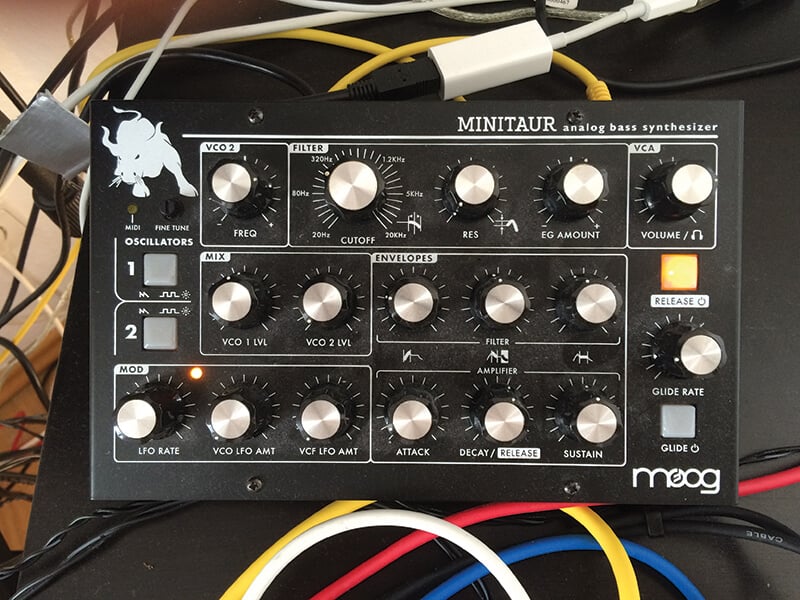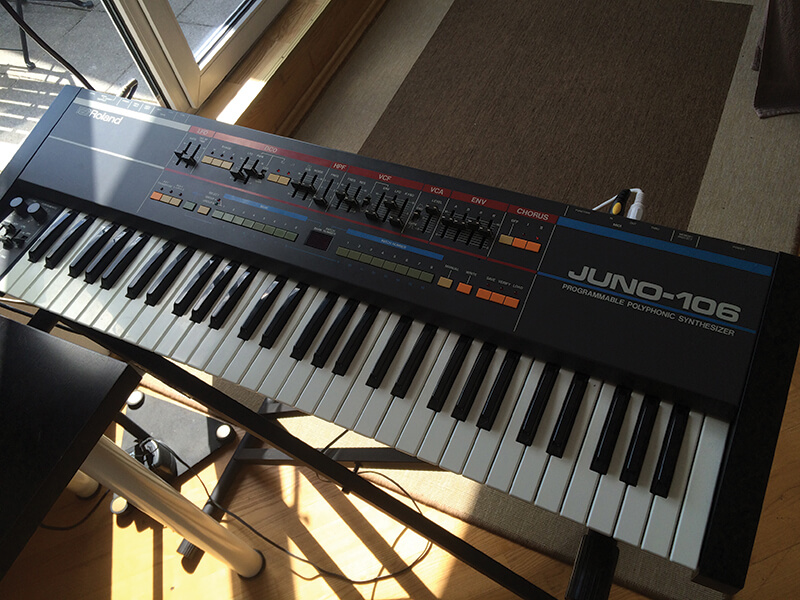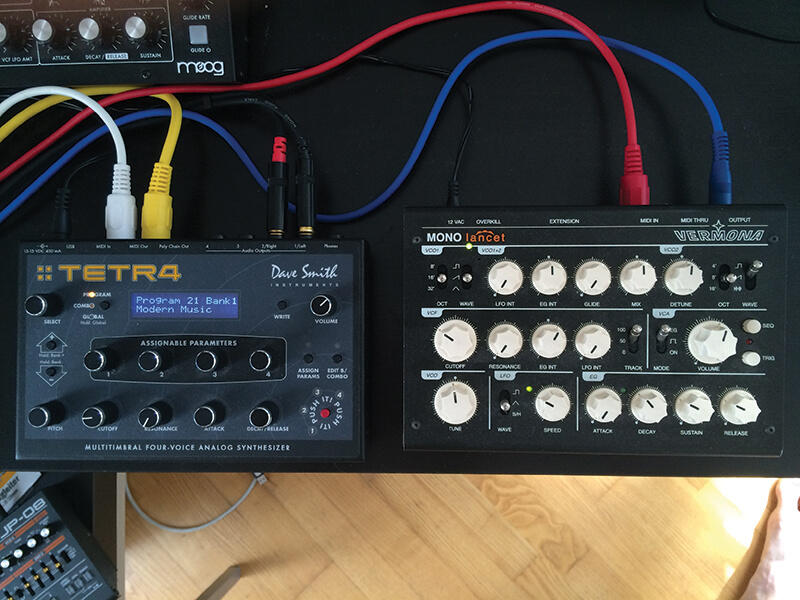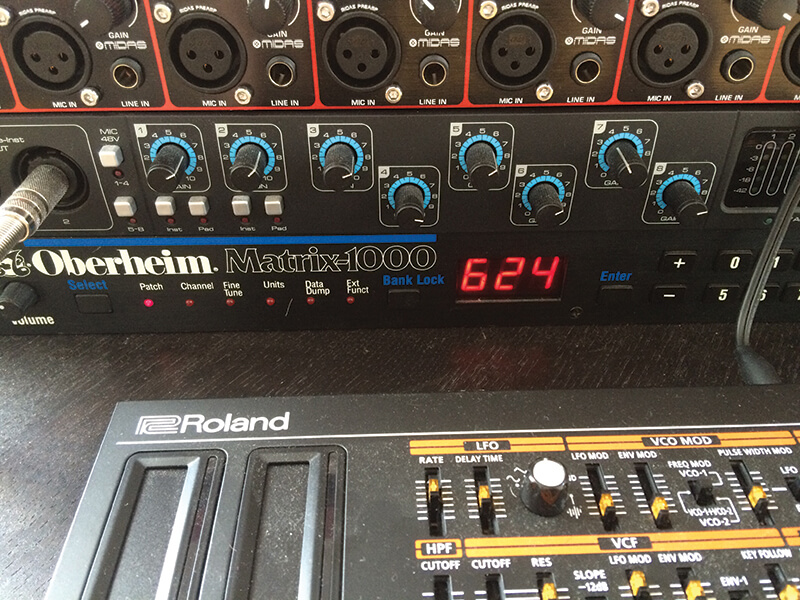THE NEW GOLDEN AGE OF ANALOG SYNTHESIS
Analog synths have undergone a radical resurgence in the last 7 or 8 years. Companies like Moog and Korg are now re-issuing and updating their former flagship models, or innovating once more with brand new iterations of the form. Others like Roland and Yamaha are re-issuing digital versions of some of their classic synths. On the other end of the spectrum, modular is more popular than ever, with legions of boutique module manufacturers churning out all sorts of Eurorack-compatible products. It really is a golden age of analog synthesis once again.
[RELATED: Understanding Bob Moog’s Legacy with Michelle Moog-Koussa.]
You might assume that I’m an analog purist. But that’s not quite true. I’ve got a small, but highly functional studio setup which is a perfect mix of budget hardware analog and digital synths, along with a few carefully chosen VST instruments and effects, all of which have their particular strengths and all of which feature heavily in my productions in perfect unity. The one unifying thread though with all of them, is that they are either real analog or analog-modeled synths. I favor quick results over super complex sound design, and analog synthesis lends itself perfectly to this.

Moog Minitaur
WHY CHOOSE ANALOG SYNTHESIZERS?
Analog synths allow me to translate my melodies and ideas into fully formed pieces, in the shortest amount of time possible. They usually sound great, straight out of the box. You don’t necessarily need to tinker for hours to get the sound you want, though of course, you absolutely can. Indeed, analog synths reward all kinds of users, from the inexperienced newcomers to the seasoned enthusiasts. Analog synths sound “warm,” a much over-used term, but never more appropriate. The gently drifting tuning, noisy cables or components and gentle distortions all combine to give the sounds that warmth. They are real instruments, every bit as playable as a guitar or piano, and every bit as “alive.”

Roland Juno-106
USING YOUR SYNTH WITH YOUR DAW
A lot of producers tout instant recall as the main reason they’ve made the switch to in-the-box production. But it’s really not that difficult to get instant recall using analog synths, too. If the synth supports presets, then all you need to do is save your sound once you’ve finished editing it and add a program change control to its corresponding MIDI pattern in your DAW. Every time you load the set and press play, it will instantly jump to that preset.
[RELATED: How to Record Analog Synthesizers Using a Modern Production Workflow]
If your synth has MIDI out you can also record all your automation and parameter tweaks straight into the DAW, and they’ll be available every time you load up the track. Certain synths may have integrated VST versions – for instance the Dave Smith Tetra has a VST available which essentially controls all aspects of the synth from within your DAW; you can use it exactly as you would any other VST, it’s just playing the sounds from the synth itself.

DSI Tetra
Likewise, there are also various Max devices available within Ableton Live, which can also control all sorts of external hardware from vintage to new. Indeed, it’s not too difficult to program these yourself.
TIPS AND TRICKS FOR GREAT SOUNDS WITH ANALOG SYNTHS
1. My favorite control for sculpting sounds is the filter, especially a 4-pole, low pass filter – turn up the resonance a touch and then twist the cutoff knob – drop down to lower settings and move up to higher settings to ramp up the intensity and drama – a simple technique I use in almost all my tracks to add movement and progression.
2. A great trick for getting super wide, real stereo sounds is to record two identical passes from a synth. The nature of analog means that every pass will be subtly different and as a result, you can pan each recording far right and far left and they will not cancel each other out, but instead give you an ultra-thick stereo sound. I use this technique a lot when recording pad sounds from my Oberheim Matrix 1000.

Oberheim Matrix 1000
3. Another technique I use for getting particularly interesting rhythms is to run a synth through a quantized digital delay. Then I put an LFO on the filter, and adjust the speed of the LFO gradually as the track plays. It results in some beautiful, galloping rhythms which gradually come in and out of focus depending on where you move the slider. My Roland Juno 106 lends itself particularly well to this kind of technique.
While the vintage models are often worth more than a small car, you can still pick up some lesser known synths for a steal. And with the absolute explosion of affordable new machines on the market, there’s no excuse for not throwing yourself in and exploring the world of analog.
ABOUT THE AUTHOR
After producing and playing under Chymera for more than 15 years, Brendan Gregoriy’s distinctive take on house and techno has seen him play at iconic venues like Panorama Bar, Womb, Output, and Rex Club, and release music on respected labels including Ovum, NRK, Delsin and Cocoon. But, 2016 sees Brendan take on a new alias…Inspired by the sounds of artists like Klaus Schulze, Biosphere and Abul Mogard, and finding renewed focus in creating without external pressures or deadlines, Gregoriy’s ambient experimentation emerged, fully-formed, as Merrin Karras. His debut album under this moniker, Apex, was released in June on A Strangely Isolated Place.
What do you think of this special guest article about recording analog synths in your DAW? Let us know in the comments below or drop a line on the Performer Magazine Facebook page or on Twitter @Performermag. And read more from the special Synth Issue of Performer Magazine.
